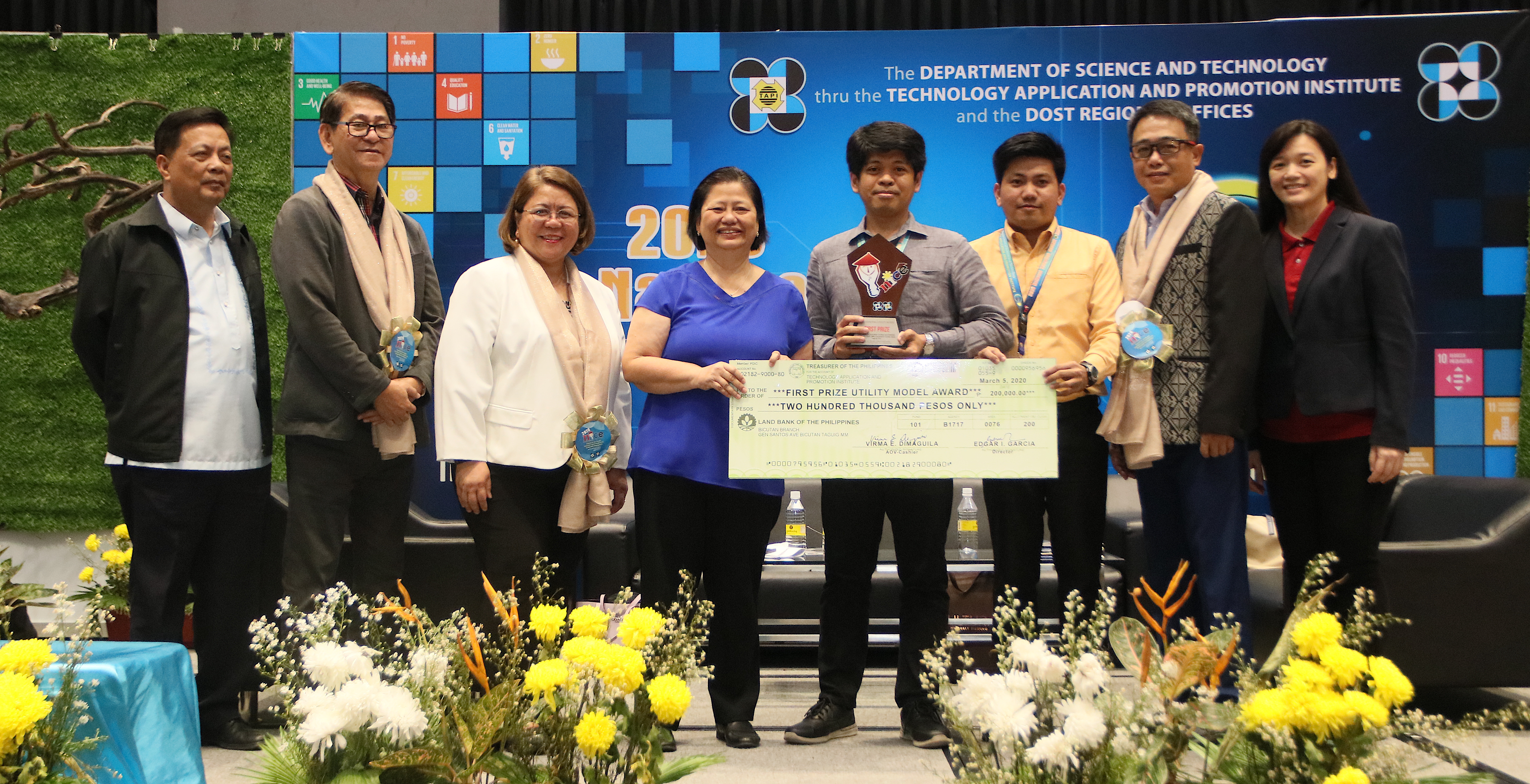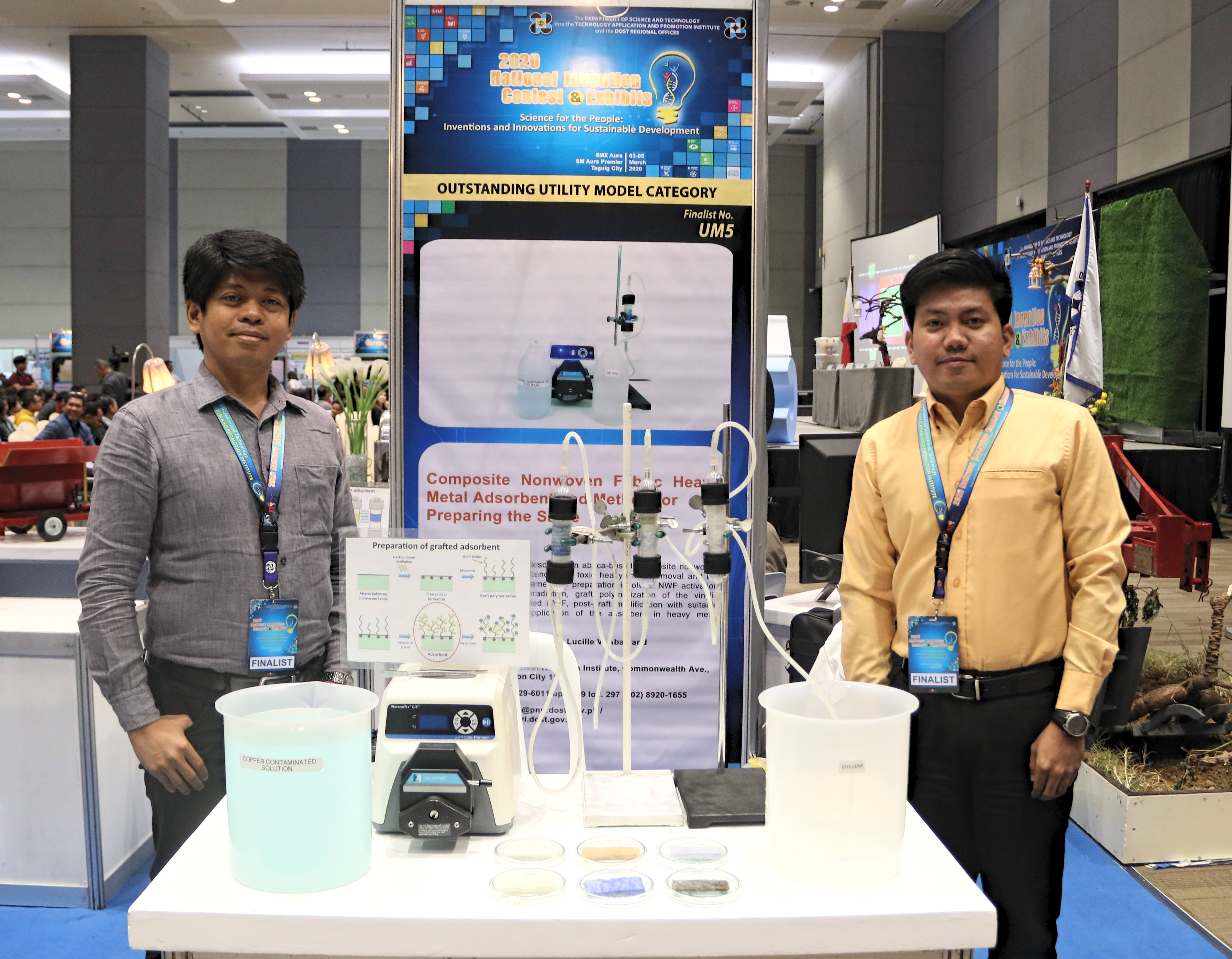
PNRI Career Scientist Dr. Lucille Abad, Dr. Jordan Madrid and Mr. Patrick Jay Cabalar (4th to 6th from left, respectively) receive the trophy and cash prize for the Outstanding Utility Model Award during the 2020 National Invention Contest and Exhibits (NICE). They are joined by DOST Undersecretary Dr. Rowena Cristina Guevara (3rd from left) DOST – Technology Application and Promotion Institute (DOST-TAPI) Director Engr. Edgar Garcia (2nd from left).

Mr. Patrick Jay Cabalar and Dr. Jordan Madrid of the Chemistry Research Section with their exhibit of the utility model “Composite Nonwoven Fabric Heavy Metal Adsorbent and Method for Preparing the Same” at the 2020 National Invention Contest and Exhibits (NICE).
PNRI Radiation-Modified Abaca/Polyester Fabric Wins Outstanding Utility Model Award at 2020 NICE
State-of-the-art radiation applications once again took the lead among the latest Filipino innovations as chemistry researchers from the Department of Science and Technology – Philippine Nuclear Research Institute (DOST-PNRI) won the first place for the Outstanding Utility Model category during the National Invention Contest and Exhibits (NICE) on March 5, 2020 at the SMX Convention Center Aura in Taguig City.
The award for the radiation-grafted abaca-based nonwoven fabric which serves as an effective filter for heavy metals was received by Dr. Jordan Madrid, head of the PNRI Chemistry Research Section (CRS), Dr. Lucille Abad, Career Scientist and Chief of PNRI’s Atomic Research Division and Mr. Patrick Jay Cabalar, CRS project staff.
Radiation can modify materials and graft various polymers with advanced properties. Using radiation from the PNRI Electron Beam Irradiation Facility, researchers grafted a fabric based on the native product abaca with synthetic polymers to develop a nonwoven fabric that can filter toxic heavy metals such as lead, cadmium, nickel, chromium, mercury and arsenic which can be harmful to human health and the environment.
Studies showed that the radiation-modified nonwoven fabric is reusable and cheaper to use than commercial resins which have the same purpose, while also being on par, if not better, in filtering the waste.
But the radiation-grafted abaca fabric’s application for wastewater treatment is just the tip of the iceberg. Researchers are also exploring other possible applications of the fabric such as for recovering precious metals and as a catalyst for producing biodiesel.
PNRI was granted a utility model for the technology in 2019. The nonwoven fabric previously won as the Regional Winner for the Regional Invention Contest and Exhibits (RICE) for the National Capital Region in November 2019. The product is an output of a PCAARRD-funded project in collaboration with Philippine Textile Research Institute which provided the abaca/polyester nonwoven fabric.
The 2020 NICE recognizes the efforts and hard work of Filipino inventors, researchers and students, encourages the development of inventions through competitions and highlights the role of the Filipino inventors in Philippine society and in the context of national economic development.












































